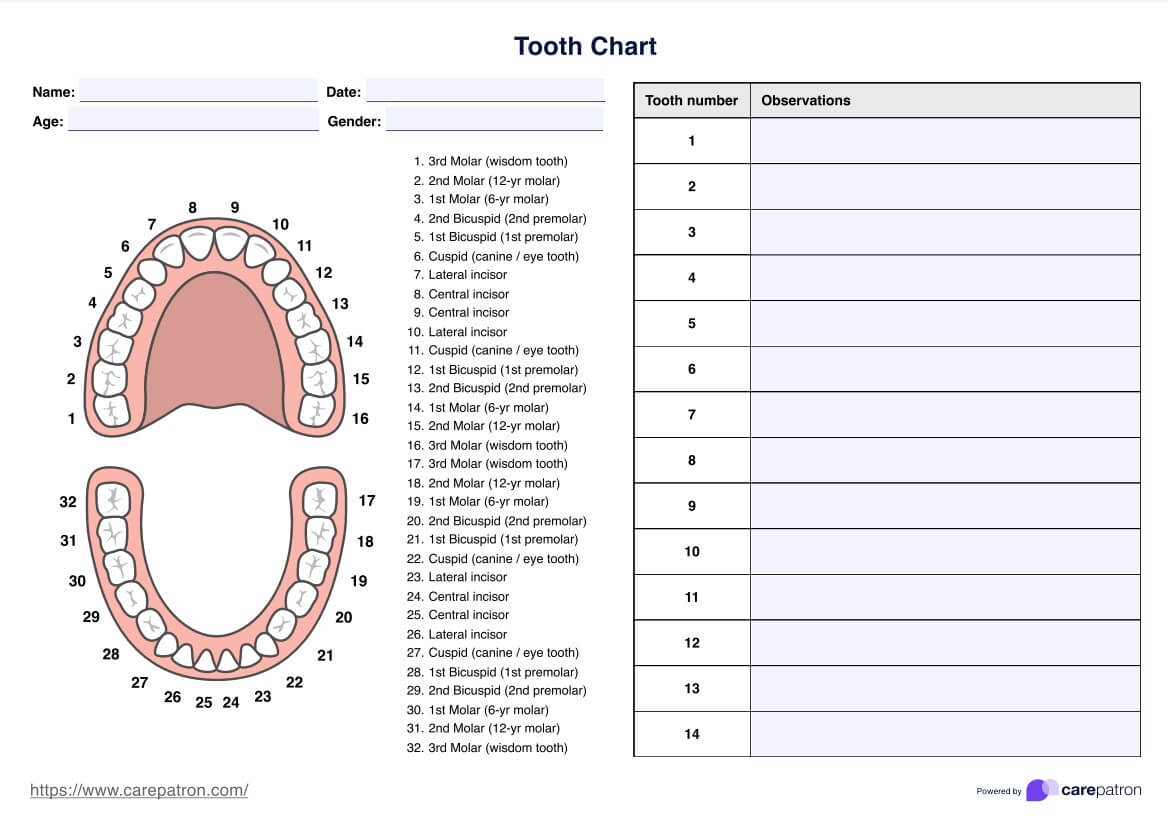A tooth chart is a visual map of the mouth that identifies and numbers each tooth for accurate dental documentation. Dentists use different numbering systems, such as the Universal, Palmer, or FDI system, to record findings, restorations, and procedures. Reading it involves recognizing tooth numbers or symbols that correspond to specific teeth and understanding notations that indicate decay, fillings, extractions, or other conditions.

Tooth Charts
Need a Tooth Chart for your dental clinic? Identify healthy teeth, plan implants, and simplify exams with our free, downloadable template.
Tooth Charts Template
Commonly asked questions
Babies typically begin teething around 6 months of age, which is when their primary (baby) teeth start to emerge and can be charted. A baby teeth chart is often used from this point until around age 3, when all 20 primary teeth usually come in. This chart helps parents and dentists track eruption patterns, identify delays, and monitor early oral health.
A dental chart is a standardized record dentists use to document the condition, placement, and treatment history of a patient’s teeth and gums. It includes diagrams of the mouth, notations of existing restorations, decay, and periodontal health, as well as planned or completed treatments. This chart serves as both a diagnostic and legal record, ensuring consistent care and communication among dental professionals.
EHR and practice management software
Get started for free
*No credit card required
Free
$0/usd
Unlimited clients
Telehealth
1GB of storage
Client portal text
Automated billing and online payments











